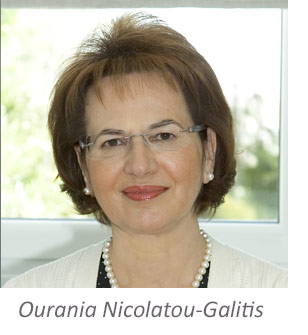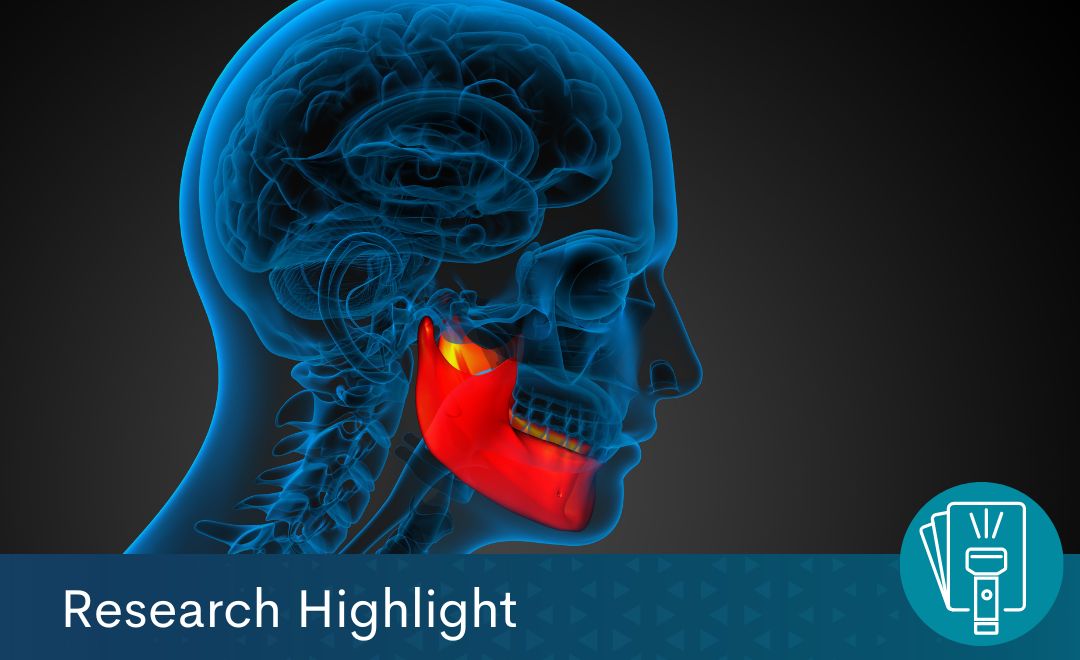
The development of medication-related osteonecrosis of the jaws (MRONJ) was highlighted as a growing epidemic at the recent International Symposium on Medication-Related Osteonecrosis of the Jaws in Copenhagen (1). For the benefit our MASCC members, Ourania Nicolatou-Galitis, DDS, DrDent, Chair of the Bone & Musculoskeletal Study Group, has provided the following update, which is based on papers presented at the meeting and recent publications.
Medication-Related ONJ. Anti-resorptive agents targeting the bone (BTAs) and other biological medications without antiresorptive properties (non-antiresorptives) are related to ONJ, and the concurrent administration of BTAs and non-antiresorptives may significantly increase the risk of BTA-related ONJ. Thus, large cancer populations are at increased risk for ONJ.
Definition and Staging. MRONJ can clinically appear as either exposed or non-exposed bone and appropriate radiology should be co-assessed, since MRONJ staging is sometimes debatable. This is partly due to the nonspecific nature of stage 0 MRONJ and the definition of the stage itself. The dynamic nature of the staging system is also a matter of debate. For example, stage 1 MRONJ can become stage 2 after infection, and stage 2 disease can be downgraded to stage 1 after a brief course of antibiotics. (1, 4). No case of stage 0 osteonecrosis was included in the multicenter case registry of MRONJ described by Schiødt et al (3).
Early Diagnosis and Prevention. In a recent study, necrosis of the alveolar bone was documented at the time of dental extractions when extracted teeth had dental or periodontal infection (70% of 40 patients with dental infection as opposed to none of 14 patients without infection). Thus, dental and periodontal pain and infection may represent early ONJ and the dental extraction should be performed if infection cannot be eliminated after one or two weeks of dental treatment (1, 4, 5). The management of dental and periodontal infection during BTA administration is crucial to reduce the risk for ONJ development.
Treatment. If MRONJ develops, conservative (non-surgical) treatment can provide symptom relief but achieving mucosal closure can remain challenging. A surgical approach may be beneficial when symptom management and mucosal healing are the ultimate goals of therapy or if conservative treatment fails. (1, 5).
Algorithm for Prevention and Management. Nicolatou-Galitis et al (4) have proposed an algorithm for best practice and prevention of MRONJ. Cancer patients with bone metastases who were receiving BTAs were defined as having an elevated risk for MRONJ. When these patients present with dental, periodontal, or jaw pain or other signs and symptoms associated with osteonecrosis, during treatment, they should be referred to the oral and maxillofacial surgeons or dental or oral oncology specialists with experience in managing MRONJ.
Education. Educational and information programs are needed for healthcare professional who work with patients treated with medications related to osteonecrosis. Patient education is also critical to minimize risk. Dentists and oncologists should be educated to speak the same language. For example, oncologists should understand the concepts of poor oral health, dental infection, periodontal disease, while dentists should be educated to better treat oncology patients by learning about oncology medications and their toxicities, as well as the somatic, psychological, and financial burdens associated with cancer.
References
- Second International Symposium on Medication-Related Osteonecrosis of the Jaws (MRONJ). Copenhagen, Denmark, November 2, 2018. Speakers: Schiødt M (Chair), Bedogni A, Fedele S, Guggenberger R, Nicolatou-Galitis O, Otto S, Brokstad Herlofson B, Kofod T, Erner Moller Andersen S, Ottesen C, Ristow, O.
- Osteonecrosis of the Jaw Related to Non-antiresorptive Medications: A Systematic Review. Nicolatou-Galitis O, Kouri M, Papadopoulou E, Vardas E, Galiti D, Epstein JB, Elad S, Campisi G, Tsoukalas N, Bektas-Kayhan K, Tan W, Body JJ, Migliorati C, Lalla RV, for the MASCC Bone Study Group. Supportive Care in Cancer 2018 Oct 23 doi.org/10.1007/s00520-018-4501-x [ePub ahead of print]
- A Multicenter Case Registry Study on Medication-related Osteonecrosis of the Jaw in Patients with Advanced Cancer. Schiødt M, Vadhan-Raj S, Chambers MS, Nicolatou-Galitis O, Politis C, Coropciuc R, Fedele S, Jandial D, Zhang J, Ma H, Saunders D. Supportive Care in Cancer 2018;26:1905-1915.
- Medication-related Osteonecrosis of the Jaw: Definition and Best Practice for Prevention, Diagnosis, and Treatment. Nicolatou-Galitis O, Schiødt M, Amaral-Mendes R, Ripamonti C, Hope S, Drudge-Coates L, Niepel D, Van den Wyngaert T. Oral Surg Oral Med Oral Pathol Oral Radiol 2018 Oct 9 [ePub ahead of print]
- Medication-related Osteonecrosis of the Jaw: Prevention, Diagnosis and Management in Patients with Cancer and Bone Metastases. Otto S, Pautke C, Van de Wyngaert T, Niepel D, Schiødt M. Cancer Treatment Reviews 2018;69:177-187.


